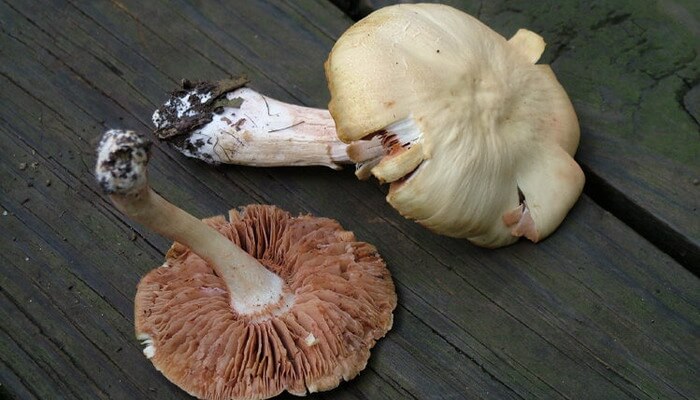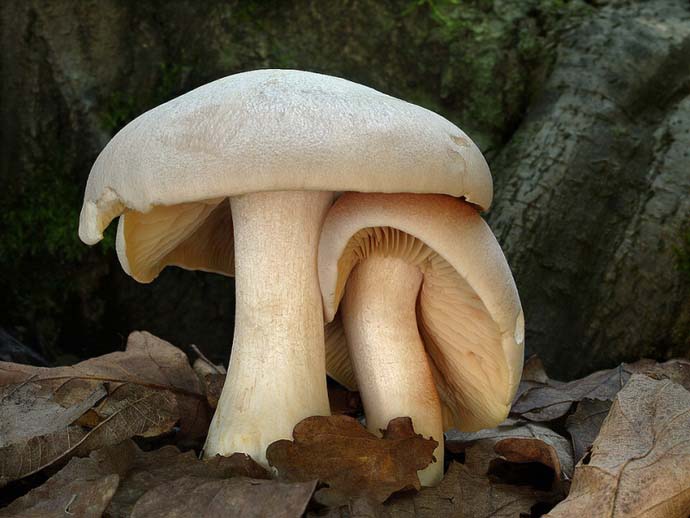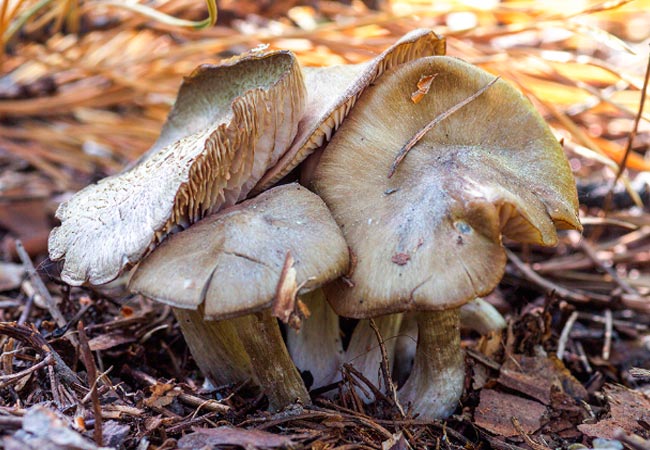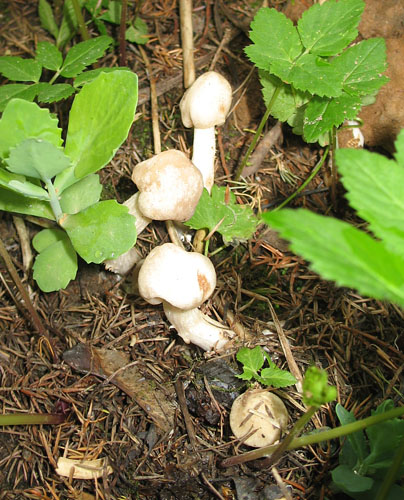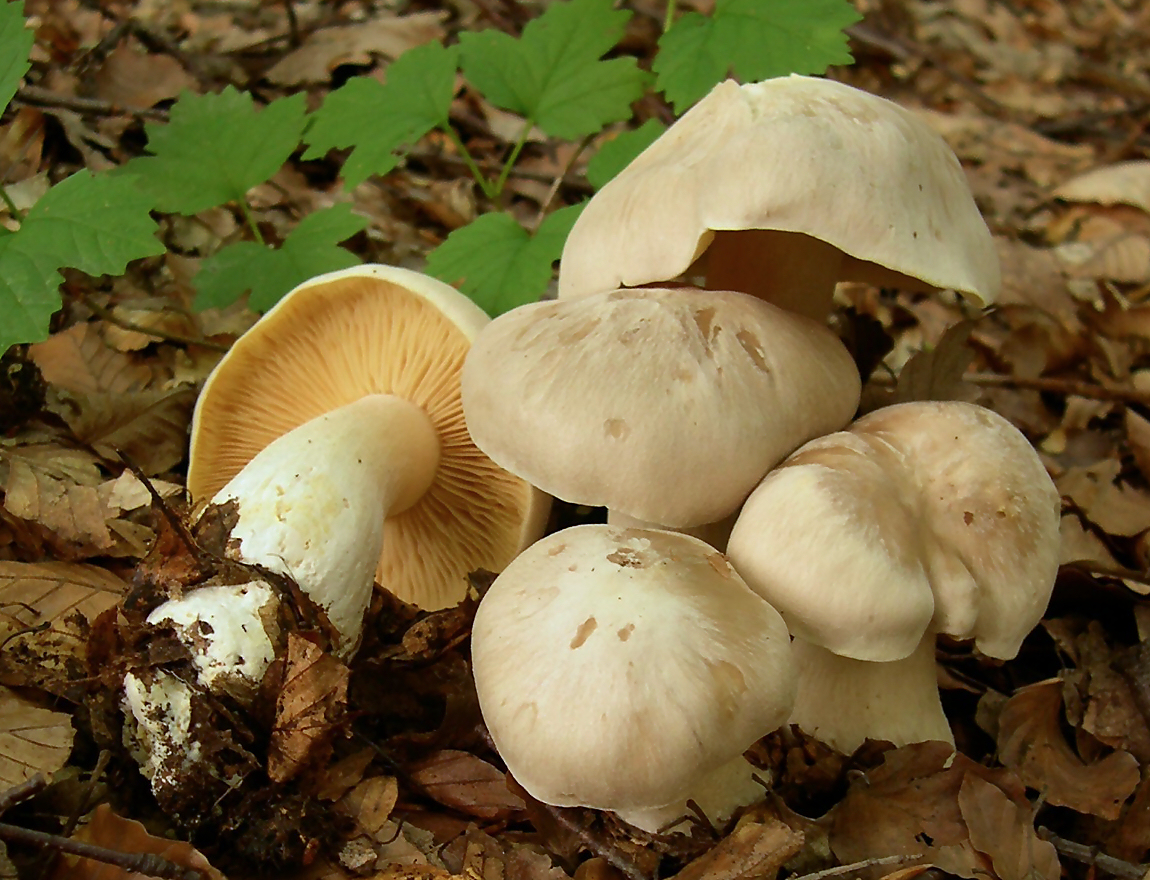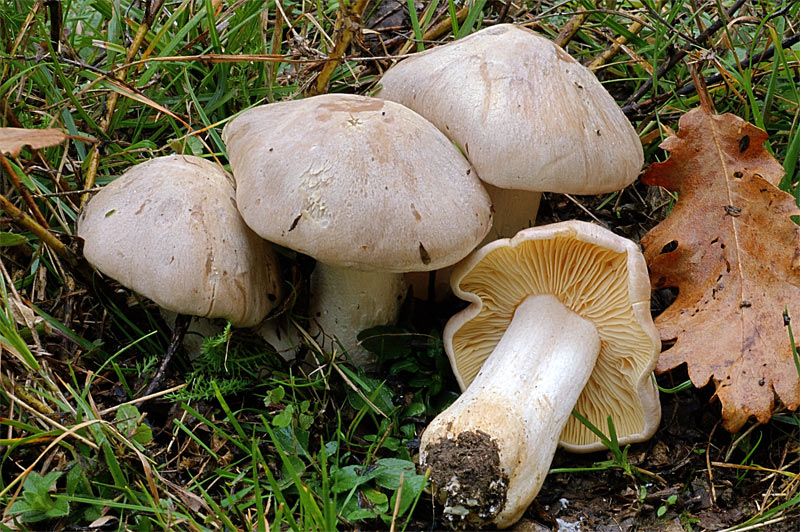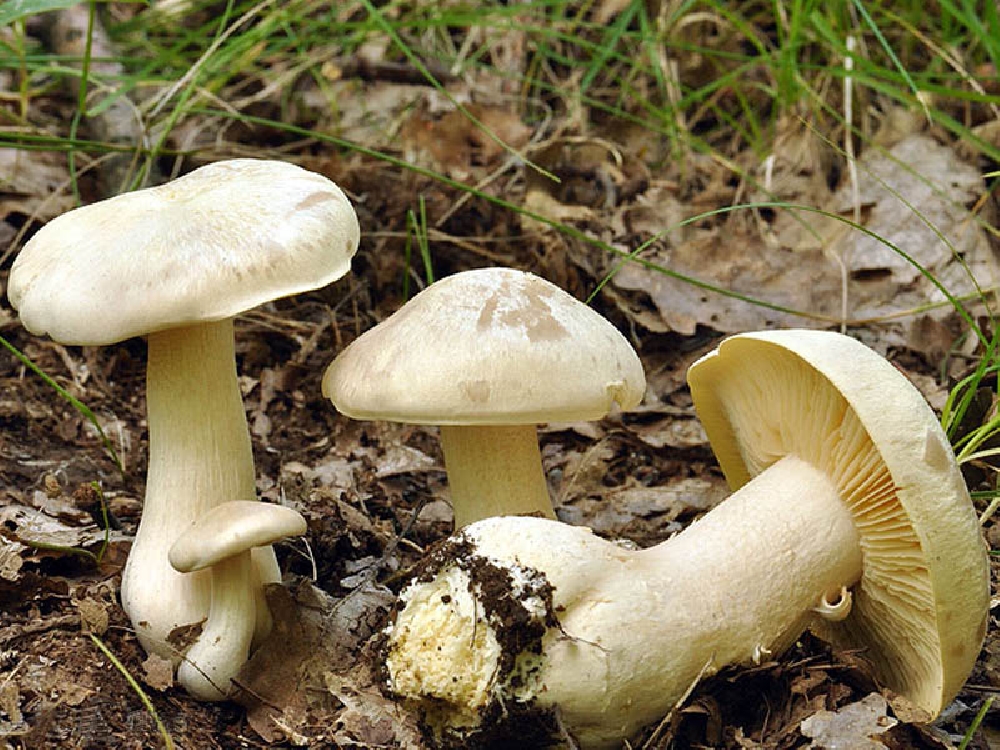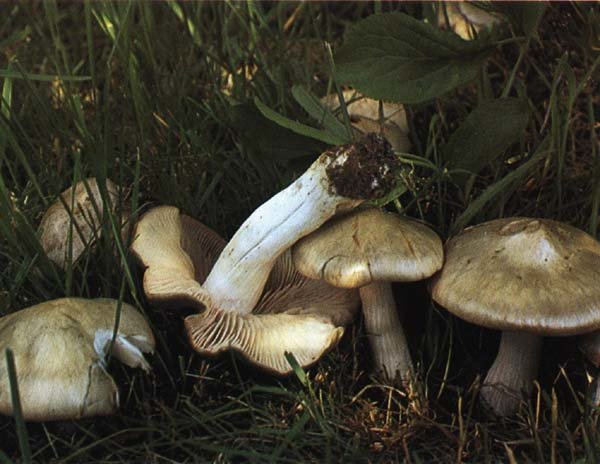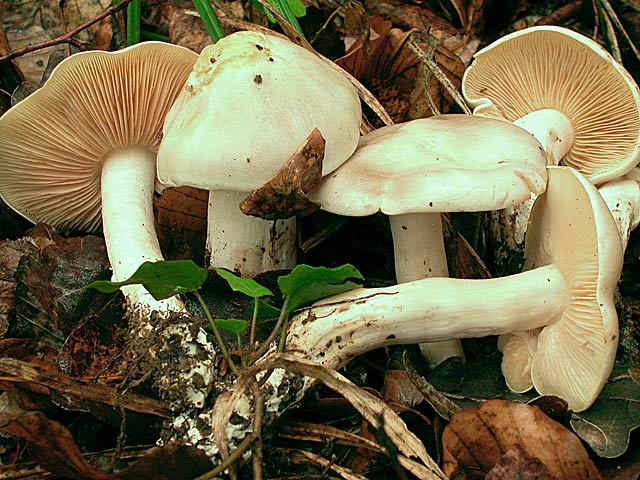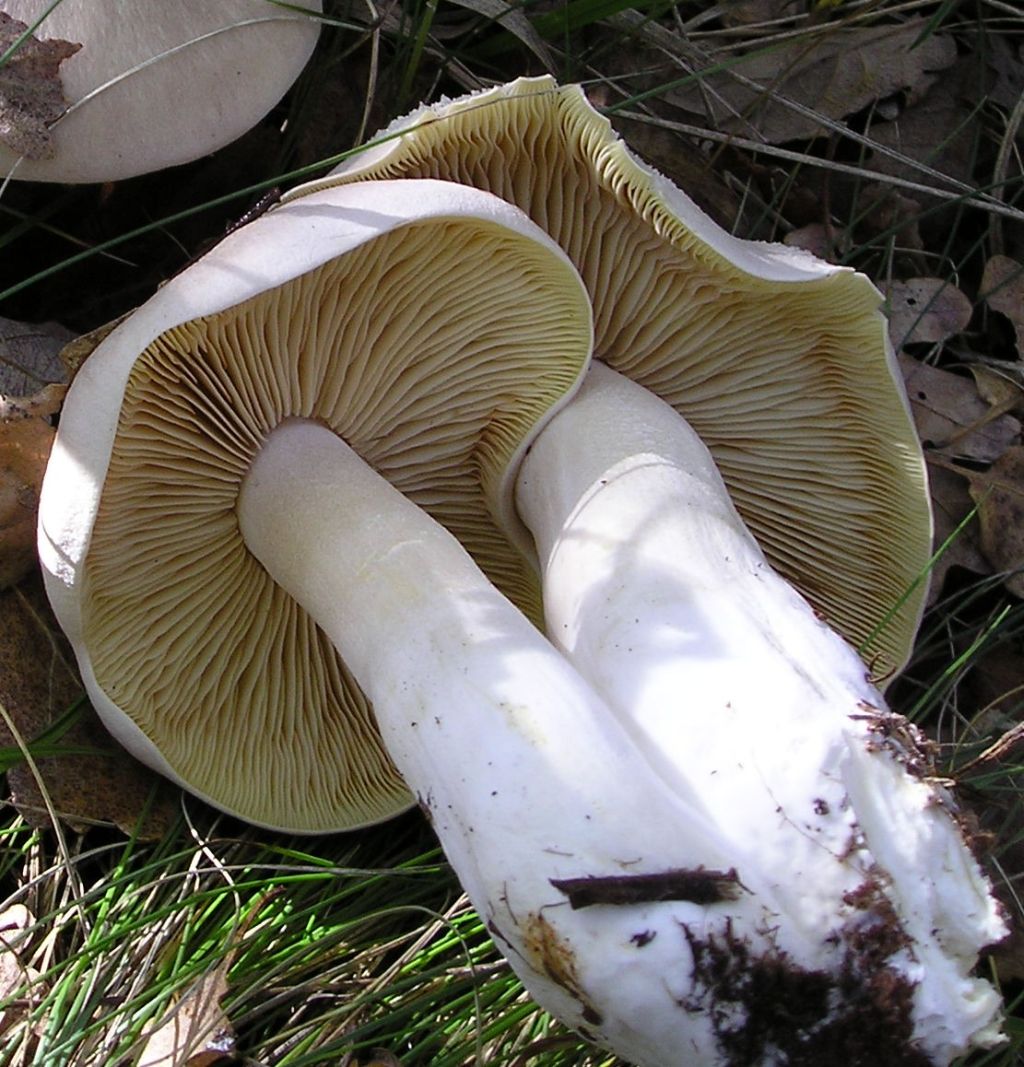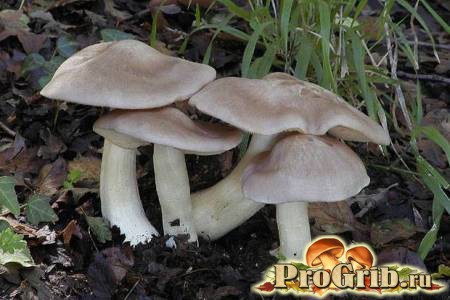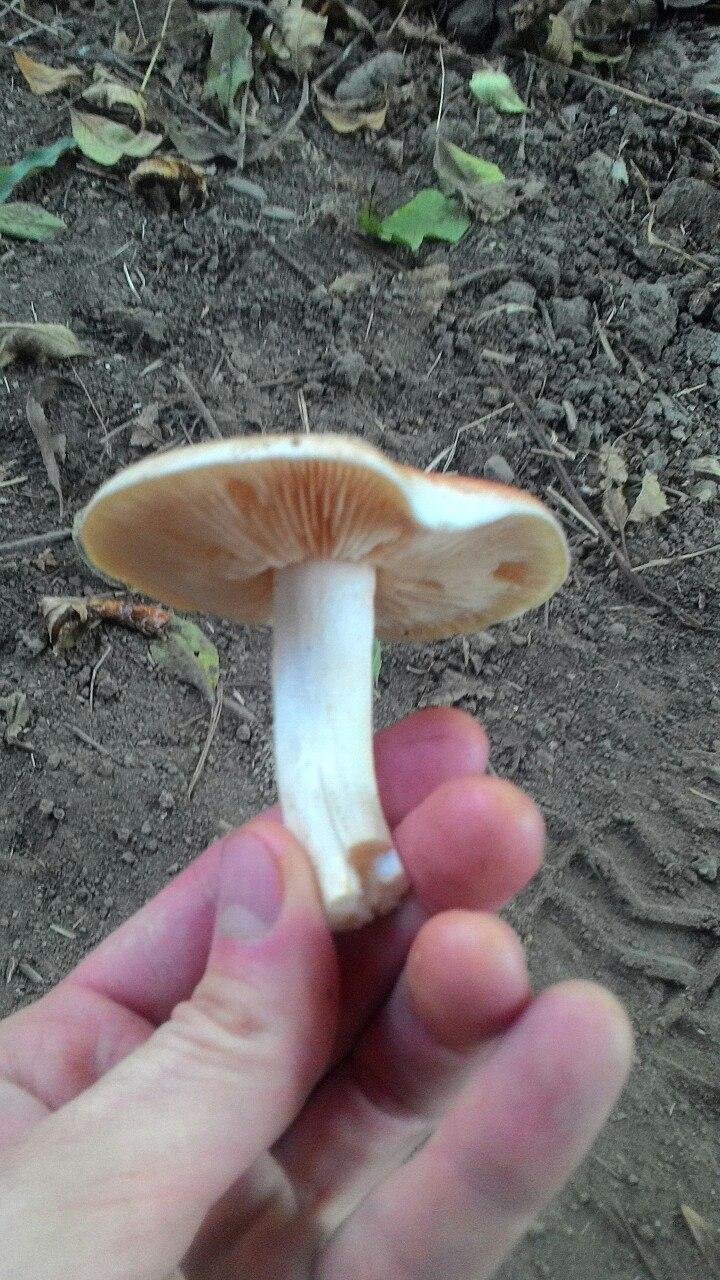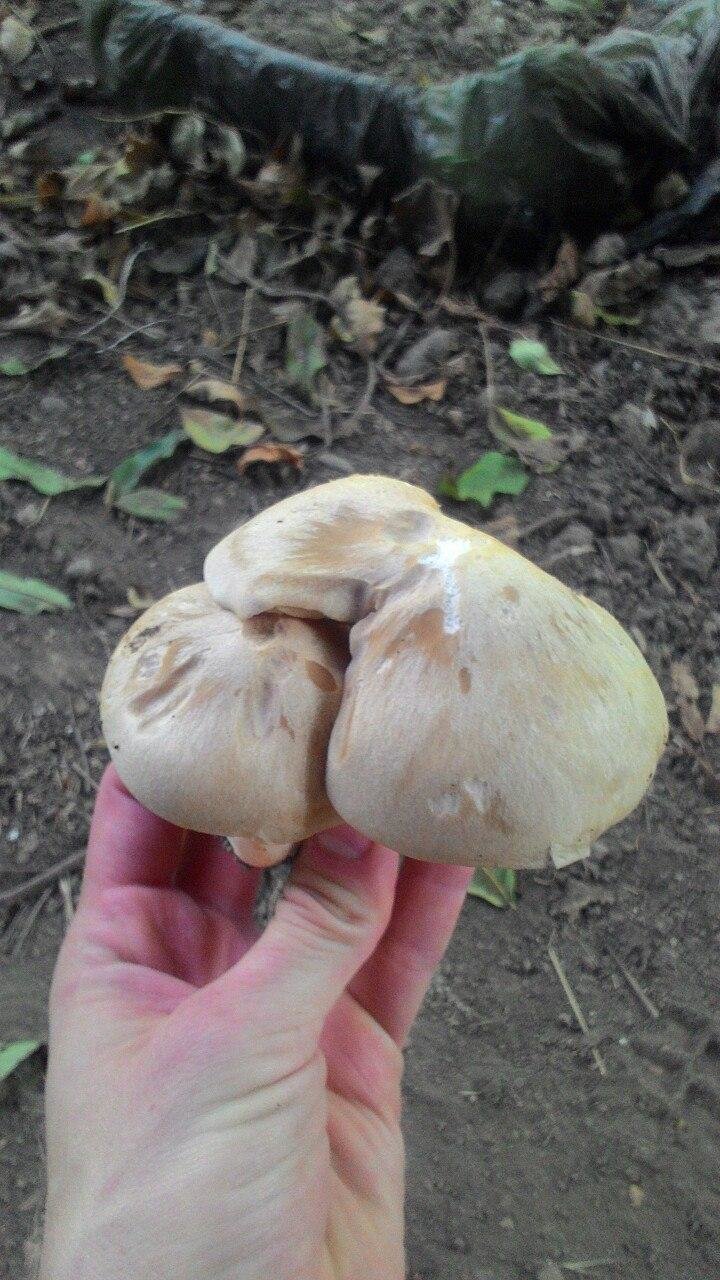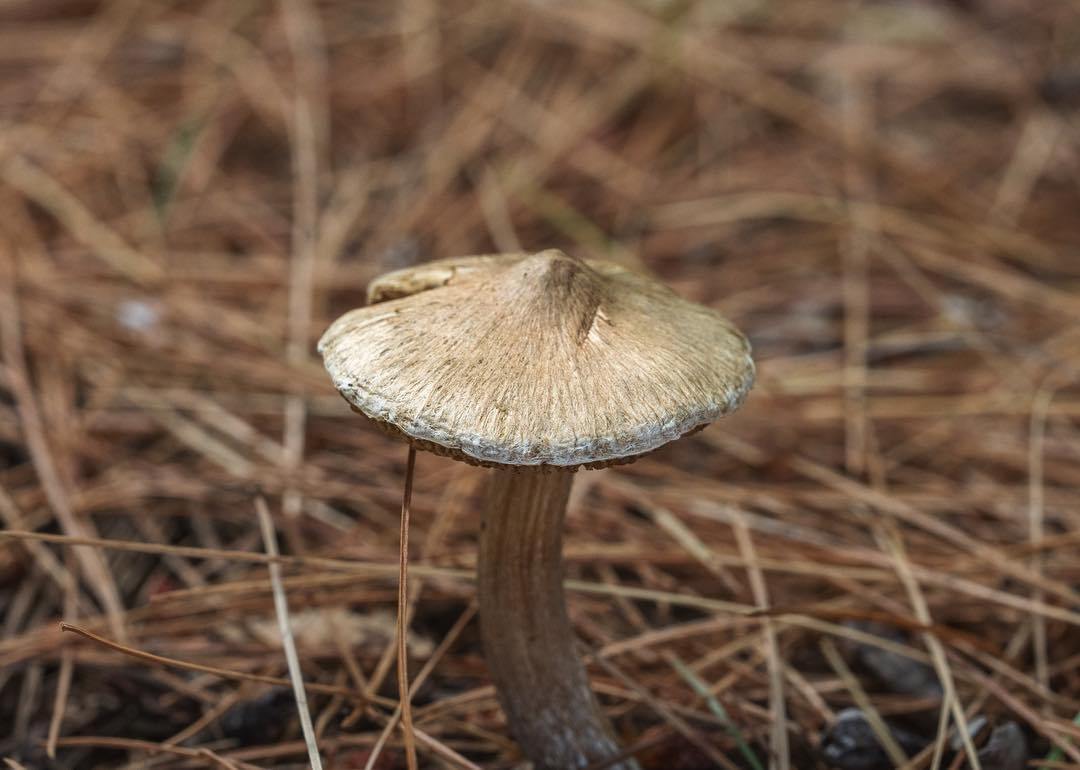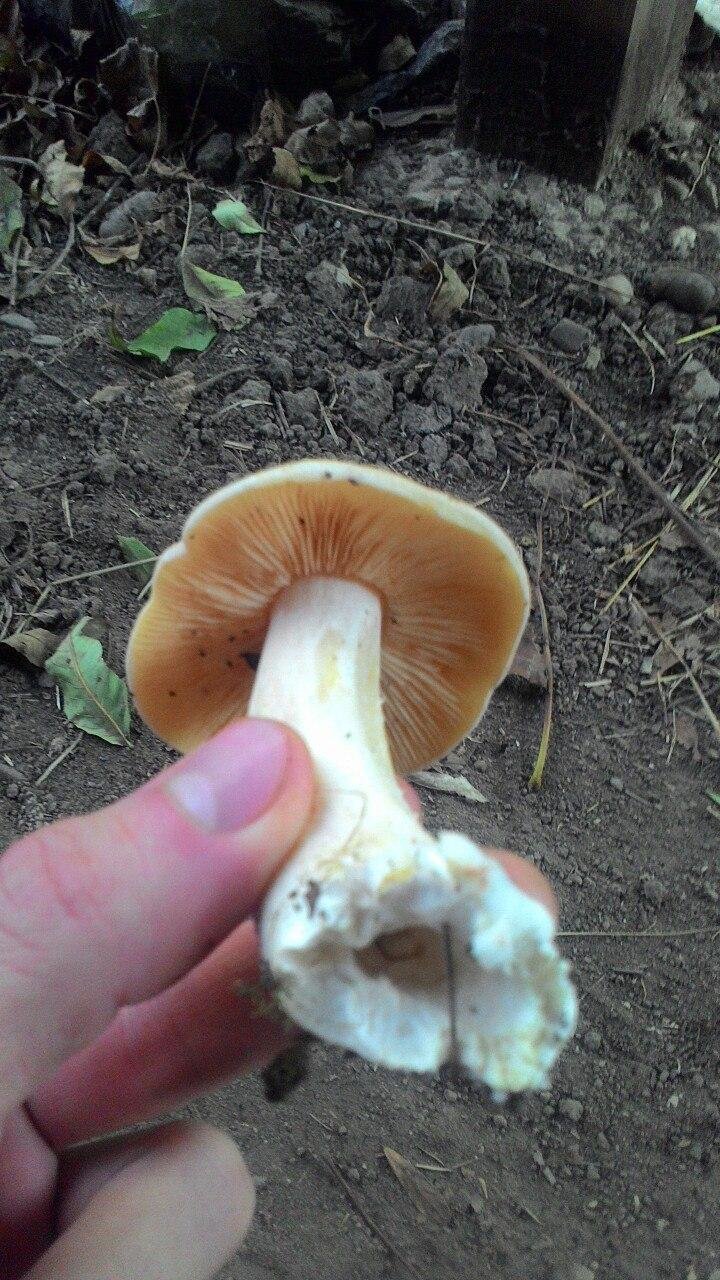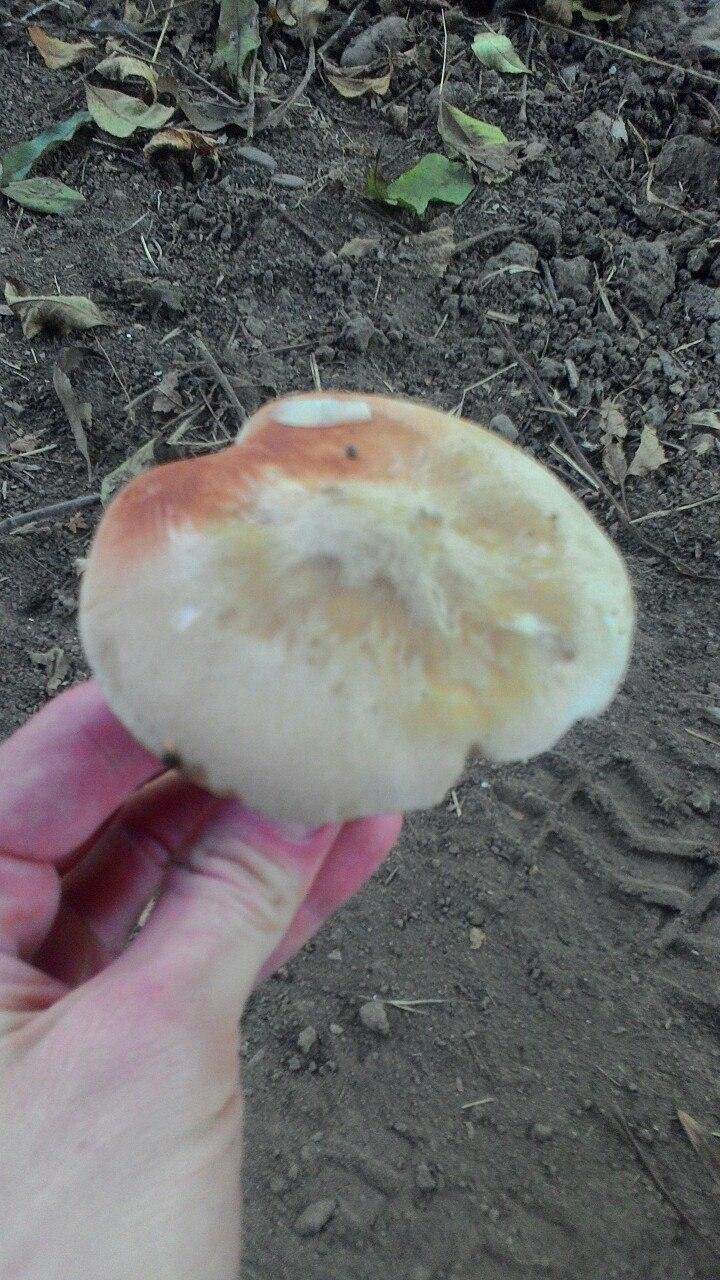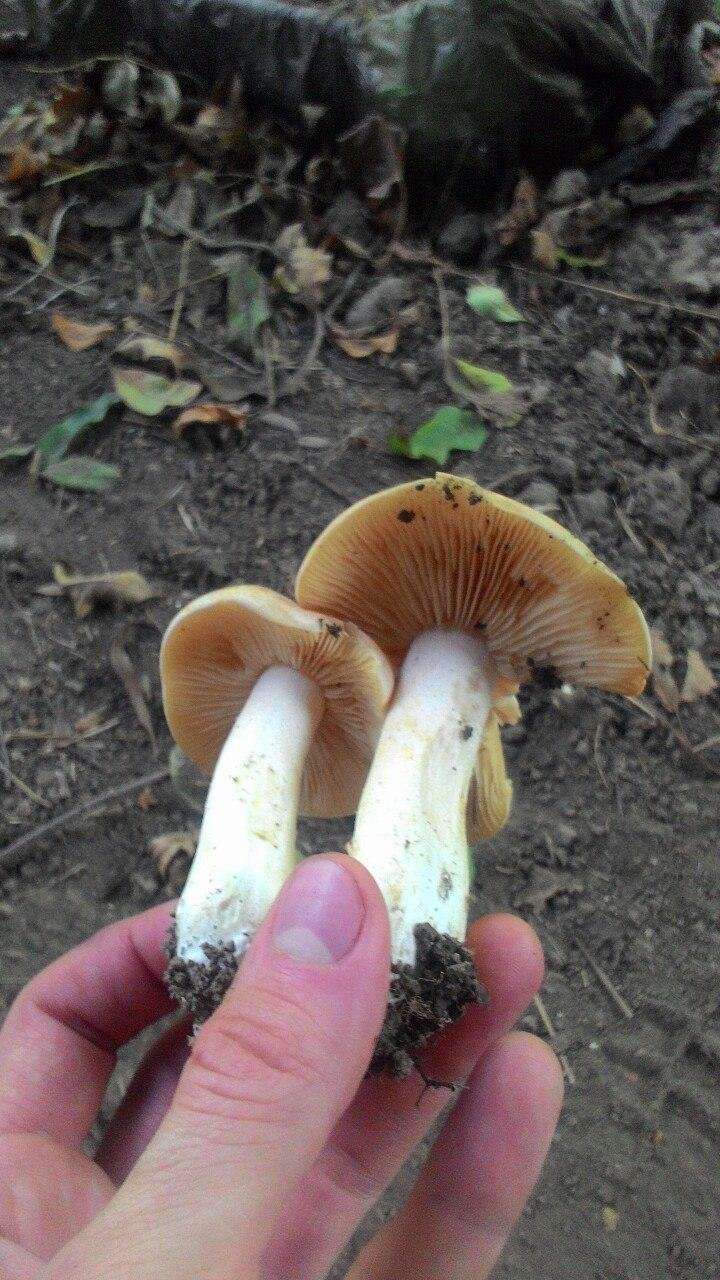Signs of poisoning
In terms of nutritional qualities, entoloma belongs to the category of inedible ones, leading to irritation of the gastrointestinal tract mucosa and causing "resinoid" syndrome, accompanied by bouts of vomiting, diarrhea and abdominal pain.
Signs of poisoning occur 0.5-2 hours after intoxication, they begin with the appearance of headache and dizziness.
Treatment of poisoning with entoloma is nonspecific and with it, gastric lavage, saline laxatives (up to the onset of diarrhea and vomiting) and enterosorbents are prescribed. If the victim develops a well-pronounced gasterointeritis, then in this case the so-called. water-electrolyte disorders "rule" with the introduction of blood-substituting fluids and prevent secondary gastrointestinal infections. All these procedures are assigned to those family members or those people who ate a mushroom dish with poisonous entola together.
Attention! The use of entoloma in large quantities is fatal.
Similar varieties
The poisonous entoloma has a number of edible varieties that are similar in terms of appearance.
When picking mushrooms, it is important to be able to correctly distinguish them from the poisonous twin:
- Hanging plant: it differs from the rose plant only by the plates descending towards the mushroom stem, the mushrooms are often the same in color.
- Garden entoloma: unlike the poisonous one, it has a hygrophilous cap, i.e. swelling under the action of liquid, due to the loose arrangement of the mycelium filaments. This species - garden entoloma grows in other places, does not occur not in forests, but only in gardens and on meadow edges.
- Spring entoloma (May): in comparison with the poisonous rose-colored plate, it often has narrow hymenophore plates planted, more often adhered to the leg.
- Smoky talker (blue): the mushroom is distinguished by the white and creamy color of often planted narrow plates, which slightly descend towards the mushroom stem and are easily separated from the cap; it also has a specific smell of flowers with rot.
- Row pigeon: unlike its poisonous counterpart, its silky cap is covered with colored specks, resembling specks on the surface of an egg, and the mushroom flesh turns pink when cut.
- Pechitsa, or ordinary champignon: its hymenophore plates are darker, there is a filmy ring on the mushroom leg.
Among the poisonous varieties, similar to the rose-colored plate, the entholoma is noted squeezed, the mushroom leg of which is darker.
Botanical characteristic
According to the description, this mushroom belongs to the saprotopha - destroyers of the dead remains of living organisms. The fruiting body has a typical cap-pedunculate structure. A characteristic feature of the family is the absence of a veil and plates adhered to the mushroom stem or descending onto it.
The rosacea is the largest species in the family, which has about a thousand species.
The mushroom cap grows up to 5-17 cm in diameter, sometimes up to 25 cm. The surface of young specimens is painted in a dirty milky color, closer to white, sometimes ocher with a gray tint. In adult rosacea, the mushroom cap is gray with brown, sometimes ashy, the surface is smooth. The central part may have small folds in adult mushrooms. In damp weather, the cap becomes sticky, as it dries, it acquires a shine.
The shape depends on the age of the mushroom:
- young specimens have a cap in the form of a hemisphere or bell-conical, its edges are tucked towards the mushroom leg,
- over time, the appearance of the cap changes to flat with a convex blunt center (tubercle) or spread, the edges of which are even or wavy,
- in overgrown mushrooms, the cap shape takes the form of a sunken irregular circle.
The mushroom pulp is dense and thick-fleshed in structure, the color is closer to white, the color does not change with mechanical damage, even severe.The smell is similar to mealy, in overgrown mushrooms it becomes rancid.
The mushroom plates of the rosacea are wide enough, 0.8-1.5 cm, sparsely planted, and have a crescent shape. The color is initially yellowish, over time it acquires a pink or reddish tint. The edges are darker than the center.
The mushroom stem is in the form of a cylinder, located in the center, it can be curved and thickened closer to the base. Its length is 4-15 cm, thickness is 1-3.5 cm. It is dense in structure. In young specimens it is solid, in adult fungi it is spongy. The color of the mushroom leg is initially white, later it becomes yellowish or takes on a gray tint. Under mechanical stress, it changes to brown. The surface is silky, with mealy in the upper part, and without coating in the lower part.
Similar species [edit | edit code]
Poisonous rose-leaf is dangerous for inexperienced mushroom pickers by its similarity with a number of edible species.
- Hawthorn, Clitopilus prunulus Scop. ex Fr.P. Kumm. 1871, mainly differs in the plates descending to the pedicle, however, it is colored in almost the same way as poisonous pink plate.
- The edible rosacea garden, Entoloma clypeatum (L.) P. Kumm. 1871) differs from the rosacea poisonous mainly in its hygrophilous cap and place of growth - it is found in gardens and meadows, and not in deciduous forests.
- The May row, Calocybe gambosa (Fr.) Donk1962, has narrow, frequent hymenophore plates, usually adherent, whitish or light ocher in color.
- Smoky talker, Clitocybe nebularis (Batsch) P. Kumm. 1857, is distinguished by narrow, frequent blades of whitish or cream color, weakly descending along the stem and easily separating from the cap. It also has a peculiar floral or putrid smell.
- The pigeon row, Tricholoma columbetta (Fr.) P. Kumm. 1871, has a silky white cap with colored spots and a flesh that turns pink at the cut.
- The common champignon, Agaricus campestris L. 1753, is easily distinguishable from the poisonous rose leaf due to the presence of a ring on the stem and darker plates.
Of the poisonous mushrooms, the related entoloma is pressed down, Entoloma rhodopolium (Fr.) P. Kumm, is very similar to the poisonous rose leaf. 1871), which is also poisonous.
Description
Poisonous entoloma (Entoloma sinuatum), as you might guess, is a poisonous representative of the Entoloma family. It is a lamellar mushroom that has several names, as well as a Latin synonym for Rhodophyllus sinuatus. It is called tin or notched-lamellar entomola, poisonous pink plate, yellowish-gray, giant.

Poisonous entoloma, according to mycologists, is considered the largest representative of the mushroom kingdom among all entolomas. For the first time, botanist and physician Pierre Buyard wrote about her in 1788, and the first description of a dangerous forest lady was written by the mycologist H. Person at the very beginning of the 19th century.
- the cap is very large, with a diameter of 5 to 17 cm, but often reaches 25 cm.Young fruiting bodies keep a bell-shaped or convex shape for a very long time and have tucked edges, but as the mushroom matures, they become convex-flat, sometimes even outstretched with a large central tubercle and wavy edges. In old fruiting bodies, it may even be slightly concave. Wrinkles often appear in the middle of the cap. The skin is smooth to the touch, becomes slightly sticky when it rains. Surface color varies from off-white or yellowish to ashy, brownish-gray;
- the leg is central, at the base it usually has a thickening, cylindrical in shape, often slightly compressed at the edges. Nice to the touch, smooth and silky, dense, solid in young fruiting bodies, but over time begins to resemble a sponge. At the surface, the cap is slightly mealy, glabrous in the lower part. The height ranges from 4 to 10 cm, and the width - from 1 to 3 cm. The color of the surface is white, sometimes with a gray tint;
- the pulp is thick, firm, firm. The color is white, but under the skin of the cap it has a brownish tint, but does not change color at the break. Unpleasant taste, rancid or mealy aroma;
- plates are notched-attached, very weakly adhered to the peduncle, wide, but sparse. By the way, probably, precisely because of how the hymenophore is attached to the base of the cap, the mushroom got the name "entoloma notched-lamellar". Color varies from dirty yellow in young fruiting bodies to pinkish or reddish in mature ones. In this case, the edges of the plates are colored darker. By the way, in some of the poisonous entolomes growing in Europe, the hymenophore does not have a yellow pigment;
- spores are light pink, smooth, angularly rounded or slightly elongated.
Is the mushroom edible or not
Poisonous entoloma, or Entoloma sinuatum, is dangerous to animals and humans. When ingested, it leads to intestinal upset. Harmful toxins are not removed even during heat treatment. Therefore, the mushroom is not used for food.
Poisoning symptoms, first aid
When the pink plate enters the body, the following symptoms appear:
- stomach ache;
- migraine;
- dizziness;
- vomit;
- diarrhea.
Attention! In case of poisoning, an ambulance is called to the victim. Large numbers of mushrooms can be fatal
The first signs appear 30 minutes after the pulp enters the stomach. Sometimes this period is up to 2 hours. Before the ambulance arrives, the patient is given activated charcoal and laxatives. The patient should drink more warm liquids.
Twin mushrooms
Poisonous entoloma, whose place is in the forest, and not on the dining table, may be there by pure chance. The fact is that the mushroom is very similar to some edible species, which is why it can be collected by an inexperienced mushroom picker.
Such mushrooms are similar to poisonous entoloma as garden entoloma, podvishny, May ryadovka, smoky talker, pigeon ryadovka, common champignon.
Due to the carelessness of mushroom pickers or the purchase of a poisonous mushroom disguised as an edible, about 10% of all food poisoning associated with the gifts of the forest is noted.
904 Article rating by Kira Stoletova
The poisonous entoloma mushroom, or pewter, belongs to the inedible representatives of the Agaric order from the Entolomaceae family. In the literature, another name for the fungus is also found - rose-leaf.

Entholoma mushroom poisonous
Notes (edit)
- From the site Mycobank.org
- Haas., Hans. The Young Specialist looks at Fungi. - Burke, 1969. - P. 126. - ISBN 0-222-79409-7.
- Noordeloos, M.E. // Entoloma s.l. - Biella Giovanna, 1992 - pp. 760. Information from the website Mycobank.org
- Noordeloos, M.E. // Fungi Europaei, Volume 5a: Entoloma (Supplement) - Edizioni Candusso, 1992 - pp. 920 - pp. 111-113.
- Agerer., R. Color Atlas of Ectomycorrhizae. - Schwäbisch Gmünd: Einhorn-Verlag, 2002. - ISBN 3-921703-77-8.
- David G. Spoerke, Barry H. Rumack. Handbook of mushroom poisoning: diagnosis and treatment. - CRC: 1994 - pp. 464 - p. 354
- Zabolotskikh T.V., Grigorenko G.V., Klimova N.V., Poddubnaya S.M. Poisoning in childhood: a manual for pediatricians. - Blagoveshchensk: Amur State Medical Academy, 2003. - 21 p. (p. 12-14)
- Bulliard., J.B.F. Herbier de la France. - 1788. - Vol. 8. - P. 337–384.
- Persoon., C.H. Synopsis methodica fungorum. - 1801. - P. 1–706.
- Kummer., P. Der Führer in die Pilzkunde. - 1871. - P. 1-146.
- Gams., Walter (2001). "Report of the Committee for Fungi: 9". Taxon50 (1): 269–72. DOI: 10.2307 / 1224527.
- Quélet., L. Enchiridion Fungorum in Europa media et praesertim in Gallia Vigentium. - 1886.
- Noordeloos, M.E. (1985). "Notulae ad floram Agaricinam Neerlandicam X-XI. Entoloma ". Persoonia12 (4): 457–462.
Similar species
The poisonous rose-leaf has a lot of twins in the kingdom of mushrooms, thereby posing a great danger to the novice mushroom picker. It is very similar to the hanging plant (Clitopilus prunulus), but the latter differs from the hero of the article only in the descending plates. Another twin of our entoloma is the garden rose-leaf (in Latin Entoloma clypeatum), which differs in a cap that swells from water and does not grow in forest belts. It is also an edible representative of the mushroom kingdom.
A considerable similarity is observed in the hero of the article, with the smoky gossip (Clitocybe nebularis) and the May ryadovka (Calocybe gambosa), mushrooms with narrow and quite often spaced plates - the main difference from this type of entoloma. It is interesting that poisonous entholoma can be confused even with the common champignon (Agaricus campestris), which differs only in the color of the plates and the ringlet (the remains of the bedspread) on the leg. The tin entoloma differs from the pigeon ryadovka (Tricholoma columbetta) by the absence of colored spots on the cap. And the double's hat also turns pink in the place of damage.
All the twins described above are edible representatives of the mushroom kingdom, but among the poisonous and inedible, the giant rose-leaf has much in common with the pressed entoloma (Entoloma rhodopolium).
Interesting facts about the dangerous mushroom
- Despite the fact that most poisonous mushrooms are not too dangerous even when eaten, poisonous entoloma can be fatal. It is enough to eat a few mushrooms for a deadly amount of poison to enter the body.
- Most often, poisonous entoloma is found near beech, oak, hornbeam, sometimes willow and birch. This is due to the fact that mycorrhiza forms in the tree and fungus.
- While developing, poisonous entoloma changes its taste from mealy to bitter and unpleasant.
- The younger the mushroom, the denser the leg. In older fruiting bodies, it takes the form of a sponge.
- Most of the poison leaves the fruiting body if the mushroom is boiled, changing the water twice, or dried.
Knowing what a rose-colored plate looks like, you can not be afraid to pick mushrooms in the forest. In order not to face the negative consequences of eating poisonous entoloma, you should first boil the mushrooms twice or use them in dried form.
Diseases and pests
The buddleya has no obvious enemies among the pests. The only one that can be noted is aphids. So spraying should be carried out only in the obvious case of the appearance of this insect.
For example, when planting, it will not hurt to place the buddley of David in a sunny location, protected from cold wind gusts. Bushes should grow freely, without blocking each other's access to the sun.
One should also take into account the peculiarity of alternate-leaved buddleia, which consists in the fact that its generative buds are located on the stems of previous years, therefore, if these shoots are damaged, flowering is weak.
Despite the absence of any special requirements for the soil in terms of growth, the quality of flowering directly depends on it. A windless, sunny area with fertile, drained soil with a neutral pH is optimal for planting buddleia.
Buddley sapling
Buddleya David is a very resistant plant, rarely gets sick, but if the air is too dry, then spider mites can hit it, and when it is too humid, gray rot appears. In drought, the whitefly also sometimes settles on this bush. The branches affected by these pests are removed, and the bush is sprayed with some kind of insecticide.
Try to grow David's buddley, then the autumn garden with flowering, fragrant bushes will remind you of spring.
First aid for poisoning
Treatment of poisoning with poisonous entoloma is symptomatic - gastric lavage, taking laxatives and sorbents. With severe gastroenteritis, saline and glucose are prescribed.
Attention: those who have no signs of entholoma poisoning, but who have been in contact with the patient, are also prescribed gastric lavage, taking sorbents and laxatives. Poisonous entoloma is dangerous because it resembles a fairly large number of species of edible mushrooms
And in those areas where it grows, during the "quiet hunt" you need to be very careful. If there is even the slightest doubt about the edibility of the mushroom, it is better to leave it in the forest.
Poisonous entoloma is dangerous because it resembles a fairly large number of species of edible mushrooms. And in those areas where it grows, during the "quiet hunt" you need to be very careful. If there is even the slightest doubt about the edibility of the mushroom, it is better to leave it in the forest.
Taxonomy [edit | edit code]
The species was first mentioned in 1788 in the work of the French naturalist Pierre Buyard as Agaricus liv> Later, in 1801, Christian Person first describes it as Agaricus sinuatus... Current binomial name Entoloma sinuatum the mushroom was obtained in the work of the German mycologist P. Kummer in 1871. Nevertheless, the name given by Pierre Bulliard continued to be widely used in the literature until it became clear that the illustration of Bulliard depicts not the poisonous rose-colored plate, but the deer crab. Since 1955 Entoloma sinuatum becomes the generally accepted scientific name of the fungus; title Entoloma liv>
Another synonym Rhodophyllus sinuatus, was introduced by the French mycologist Lucien Kele, who in 1886 combined mushrooms with pink adherent or notched hymenophore plates and angular spores into an alternative genus Rhodophyllus.
Binomen Entoloma eulividum (Bull.) Noordel., 1985 refers to the usual form (subspecies) Entoloma sinuatum - with yellowish plates. Previously, this form was allocated in a separate form, different from Entoloma sinuatum (with discs without yellowish color).
For some reason, when looking at this mushroom, there is a desire not to touch it and pass by. Poisonous entoloma - seemingly an ordinary, unremarkable representative of the mushroom kingdom. But I don’t want to touch it subconsciously. What does this mushroom look like, is it edible and where is it distributed?
Growing geography
The rose-colored plate is a relatively rare species. Entoloma poisonous grows mainly on heavy clay soils or on soils in which there is a large amount of limestone. It settles singly or in small groups, choosing lighted areas of deciduous and mixed forests, parks and oak groves.
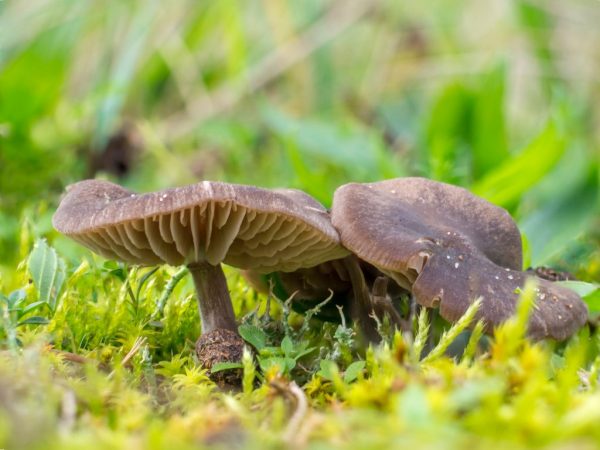
The rose-colored plate is infrequent
Able to form a symbiotic association of mycelium (mycorrhiza) with the roots of oak, beech and hornbeam, in rare cases - birch or willow.
Tin entoloma prefers regions with warm climates. In Russia, it is found in the southern regions of the European part, in the North Caucasus and in the South Siberian regions, less often in the Murmansk region and Karelia.
Treatment for poisoning
In case of poisoning with a poisonous mushroom, the first thing to do is call an ambulance. In this case, the patient is taken to the hospital for further hospitalization, and the remains of the mushrooms are taken for examination in the laboratory to determine the toxicity.
The hospital provides the following assistance for poisoning:
- Washing the stomach with a large amount of warm, slightly salted water in order to remove the remaining toxins from the body, which have not yet had time to be absorbed into the bloodstream or pass from the stomach into the intestines. For this, a large amount of water is drunk, and then vomiting is artificially induced, the procedure is repeated several times.
- The intestines are washed with an enema with rehydron or a small amount of table salt. The procedure is also repeated several times.
- Absorbents are given that neutralize the action of the toxins of the fungus.
- If the diarrhea has not yet begun, then the patient is given a laxative.
- When a large number of poisonous mushrooms are consumed, inflammation of the stomach lining can begin. In this case, the patient is injected intravenously with a mixture of glucose and saline.
- Sometimes a blood transfusion may be required.
It is important to provide a drinking regime with the use of large amounts of mineral water to remove toxins naturally. In addition, after all the manipulations carried out, the person will feel a strong thirst.
In case of poisoning with poisonous entoloma, hospitalization is indicated for 2-4 days, depending on the severity of the condition.
Immediate treatment
If a person is poisoned by poisonous mushrooms in nature or at home, this can be determined only on the basis of a conversation with him. In this case, the remains of the cooked dish are taken for research. In the toxicology department of the hospital, the patient is given the following treatment:
With the help of special equipment, the stomach is washed with slightly salted or clean water.
The intestines are cleansed with an enema. For this, doctors use a solution of rehydron or a solution of ordinary table salt.
The patient is given a strong laxative
It is especially important not to miss this moment when vomiting and diarrhea are not yet present.
The specialist prescribes any adsorbents.
If stomach inflammation is severe, glucose or saline is injected intravenously.
In severe poisoning, a blood transfusion may be necessary in some cases.
To prevent dehydration and speed up the elimination of toxins, it is necessary to provide the patient with a good drinking regimen.You can give almost any liquid: compotes, water, decoctions of medicinal herbs or green tea. Soda or milk is not recommended as a drink.
If the whole family has tasted the dish from the poisonous rose plate, then preventive measures in the form of washing the intestines and stomach are carried out by everyone, even in the absence of symptoms of poisoning. Also, for several days, doctors prescribe adsorbents to all family members.
Definitioner
- Basidia (Basidia)
-
Lat. Basidia. A specialized structure of sexual reproduction in fungi, inherent only in Basidiomycetes. Basidia are terminal (end) elements of hyphae of various shapes and sizes, on which spores develop exogenously (outside).
Basidia are diverse in structure and method of attachment to hyphae.
According to the position relative to the axis of the hypha, to which they are attached, three types of basidia are distinguished:
Apical basidia are formed from the terminal cell of the hypha and are located parallel to its axis.
Pleurobasidia are formed from lateral processes and are located perpendicular to the axis of the hypha, which continues to grow and can form new processes with basidia.
Subasidia are formed from a lateral process, turned perpendicular to the axis of the hypha, which, after the formation of one basidium, stops its growth.
Based on morphology:
Holobasidia - unicellular basidia, not divided by septa (see Fig. A, D.).
Phragmobasidia are divided by transverse or vertical septa, usually into four cells (see Fig. B, C).
By type of development:
Heterobasidia consists of two parts - hypobasidia and epibasidia developing from it, with or without partitions (see Fig. C, B) (see Fig. D).
Homobasidia is not divided into hypo- and epibasidia and in all cases is considered holobasidia (Fig. A).
Basidia is the place of karyogamy, meiosis and the formation of basidiospores. Homobasidia, as a rule, is not functionally divided, and meiosis follows karyogamy in it. However, basidia can be divided into probasidia - the site of karyogamy and metabasidia - the site of meiosis. Probasidium is often a dormant spore, for example in rust fungi. In such cases, probazidia grows with metabasidia, in which meiosis occurs and on which basidiospores are formed (see Fig. E).
See Karyogamy, Meiosis, Gifa.
- Pileipellis
-
Lat. Pileipellis, skin - differentiated surface layer of the cap of agaricoid basidiomycetes. The structure of the skin in most cases differs from the inner flesh of the cap and may have a different structure. The structural features of pileipellis are often used as diagnostic features in descriptions of fungi species.
According to their structure, they are divided into four main types: cutis, trichoderma, hymeniderma and epithelium.
See Agaricoid fungi, Basidiomycete, Cutis, Trichoderma, Gimeniderm, Epithelium.
- Cutis
-
The type of cap skin, consists of creeping non-gelatinized hyphae located parallel to the surface. The surface of the cap looks smooth.
Lat. Cutis.
See Gifa.
Entoloma poisonous
Poisonous entoloma - lat. Entoloma sinuatum
In a different way, a dangerous mushroom is called Entoloma tin, Rosovoplastinnik gigantic, Rosovoplastinnik poisonous, Entoloma notched-lamellar, or Rosovoplastinnik yellowish-glaucous.
Mushroom cap
Pewter entoloma builds up a giant cap with a diameter of up to 25 cm. The hats of young mushrooms at first have a convex rounded or bell-shaped shape, after which they spread out or remain convex-flat.
The edges of the caps are at first tucked up, as they mature, they are lowered, even or wavy. In the center of the mushroom, a sloping mound is preserved; in old mushrooms, a notch often appears.
The glossy silky skin becomes sticky in wet weather. It is painted gray-ocher or grayish-white, with age turning into a gray-brown shade with an ash tint.
The inside of the hats has a fleshy white flesh that turns brown under the skin and does not change color after damage.The flesh of a young pink-colored plate smells like flour, while old mushrooms exude a rancid odor. It is tasteless or has a bitter taste.
The bottom of the hat is speckled with weakly growing thin plates 8-15 mm wide. Young plates are grayish-yellow in color, while mature ones are pink or reddish with a dark edge.
Giant pink laminae reproduces by angular spores, forming them in pink spore powder.
Stipe
Entoloma poisonous has a powerful cylindrical or clavate leg, bending downward, the diameter of which is 10-35 mm, and the length is 40-150 mm. At a young age, the legs are filled with pulp, which later turns into a spongy mass.
The leg is covered with a smooth silky white skin that turns gray or yellow with time. If you press on it, it will turn slightly brown. The lower part remains smooth, the upper part is covered with a mealy bloom.
Entoloma poisonous (Entoloma sinuatum)
Growing places
Poisonous rose-leaf is a rare mushroom that prefers heavy clay or limestone soil of light deciduous and mixed forests and parks with beech, oak, hornbeam, willow and birch trees. It is found in the South Siberian, North Caucasian and European parts of Russia, as well as in Ukraine.
Single and numerous fruiting occurs at the end of May - beginning of October.
Edibility
The name of the mushroom speaks for itself: Poisonous entoloma is very toxic. Its use causes severe food poisoning, accompanied by fever, vomiting, abdominal pain, etc. If you eat a large number of mushrooms, you can die.
Pink plate yellowish-gray: appearance
The cap of this mushroom is quite large - it reaches up to 20 cm in diameter. In young mushrooms, the cap is convex, white, then becomes flat. The color can range from brown to yellow.
The pulp is white, thick. The plates are curved, wide, infrequent, rather weakly adhered to the stem. At a young age, the plates are whitish, sometimes salmon in color, in mature ones - a rich pink color.
The leg is very elastic and long - about 10 cm, but at the same time small in diameter - a maximum of 2 cm. Inside the leg there are rather elastic white fibers that are difficult to break without the help of a knife.
Young mushrooms smell like freshly ground flour (mealy); in mature specimens, the odor is unpleasant.
We invite you to familiarize yourself Cultivation of porcini mushrooms at home. Mushroom growing technology
Spore powder of flesh-pink color.


